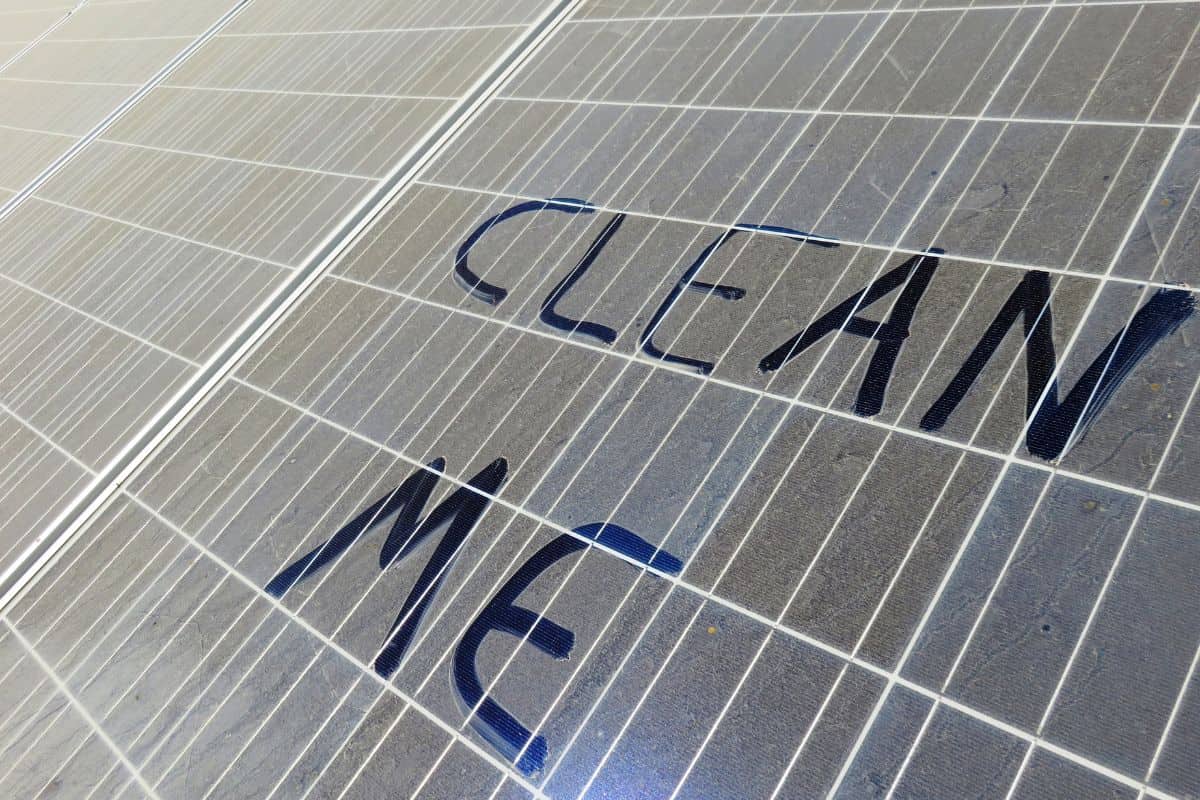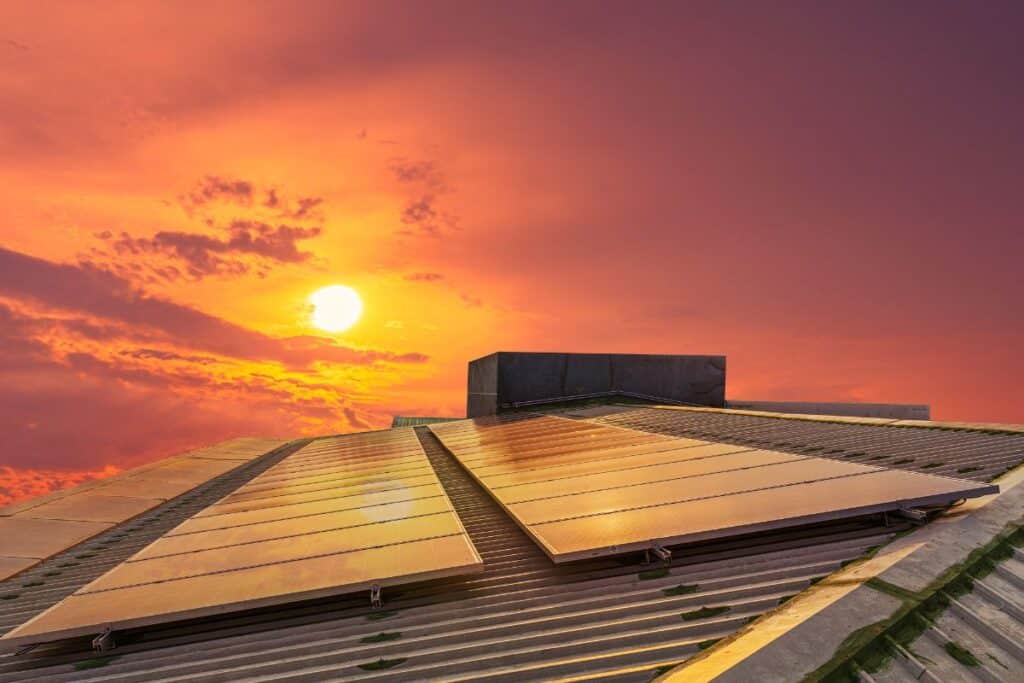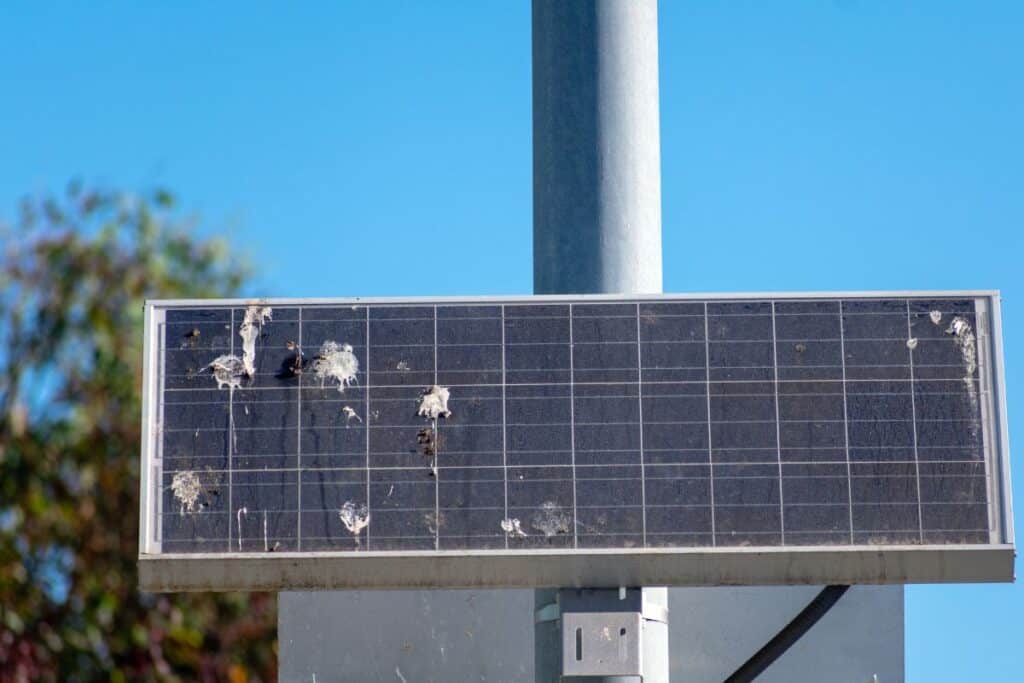Have you installed solar panels and wondering if they need a cleaning schedule? It’s a common question that often pops up often- “Do solar panels require cleaning?”
The short answer is yes. Solar panels, like any outdoor equipment, can get dirty and may need occasional cleaning. When you set up your solar panels, they’re exposed to the elements. Dust, leaves, bird droppings, and other debris can accumulate over time, potentially affecting their performance.
But the answer is unfortunately not that simple…
In regions where it rains frequently, rainwater can often keep your solar panels clean enough.
However, if you live in a dry or dusty area, your panels may need a bit more attention.
The good news is, solar panels are designed with durability in mind. They can withstand a lot, from scorching heat to freezing cold (even hail and ice), and yes, a little bit of dirt.

Their performance doesn’t dramatically drop the moment a leaf lands on them. Many solar panel systems will only see a minor decrease in efficiency due to dirt and debris.
The performance of your solar panels and their need for cleaning can also depend on the angle of installation.
Panels installed at an angle are more likely to be cleaned by rainwater and have debris slide off naturally.
In contrast, panels installed flat may retain more dirt and debris.
One important aspect to note is that it’s not just about efficiency, but also about longevity. While dirty solar panels can still function, allowing layers of grime to build up over time could potentially lead to more long-term issues.
Dirt can cause hot-spots on the panels, which could lead to damage over time.
Now, should you mark your calendar for a monthly solar panel cleaning day? Not necessarily. In most cases, an annual cleaning will suffice. (We’ve written an extensive guide to show you how to clean your solar panels)
However, if your panels look particularly dirty or you notice a significant drop in efficiency, a cleaning might be in order.
While solar panels do need occasional cleaning, they’re pretty low-maintenance. An annual check should keep them in tip-top shape.
Consequences of Not Cleaning Solar Panels: Is it a Big Deal?
No that you’ve learned that solar panels, indeed, can use some cleaning, but what happens if you skip it? Let’s dive deeper into this topic.
If you decide to ignore the dust and debris accumulating on your solar panels, you could be facing a slight drop in efficiency. The dirt and grime can block sunlight from reaching the solar cells, reducing their power output. It’s like wearing sunglasses – it dims the sunlight.
Now, how much does efficiency actually decrease? Various studies indicate that uncleaned solar panels can lose between 2% to 25% efficiency, depending on the amount of dirt and the local environment.
However, for the average residential solar setup, the loss is typically on the lower end of that range. A thin layer of dust might only cause a 5% reduction.
The greater concern lies in the possibility of long-term damage. When dirt builds up, it can create hot spots on the solar panels as the cells beneath the dirt continue to absorb sunlight without converting it into electricity.
These hot spots can gradually wear out the affected solar cells, leading to panel damage and shorter lifespan. More on these hot spots a little later in this article.
It’s also crucial to note that dust and debris aren’t the only concerns. If you live in an area with heavy snowfall, leaving a layer of snow on your solar panels can effectively block all sunlight.
Similarly, if you live near the sea, salt residue can build up on the panels and might require more frequent cleaning.
While your solar panels won’t stop working if you don’t clean them, they might not work as efficiently.
Overlooking their cleaning over a longer period might even lead to premature panel aging. So, even though they’re low maintenance, paying a little attention to your solar panels’ cleanliness can ensure you enjoy maximum efficiency and lifespan.

Dirty Solar Panels vs Clean: Real-world Comparisons
Understanding the impact of clean versus dirty solar panels might be clearer with some real-world examples. Let’s explore this further.
Imagine two identical homes side-by-side, both powered by solar energy. Both have similar solar installations, and both receive the same amount of sunlight. The only difference is that one homeowner regularly cleans their panels, while the other does not.
The house with clean panels continues to run efficiently. Over the course of a year, the panels operate at near-optimum performance, with minimal efficiency loss due to any temporary dirt or debris accumulation.
Let’s say these panels produce around 6,000 kWh of electricity over the year. On the other hand, the house with the dirty solar panels might be a different story.
If the panels are moderately dirty—let’s say they’ve accumulated a 5% reduction in efficiency—that equates to a loss of 300 kWh annually.
It might not sound like much, but when translated into the electricity bill savings that you’d otherwise have enjoyed, this can mean losing out on $30 to $60 a year, based on average U.S. electricity prices.
However, the stakes rise dramatically when the dirt accumulation is heavier.
In some instances, such as if bird droppings or thick layers of dust cover the panels, your system could experience a 25% efficiency loss.
Applying this to our 6,000 kWh system, that’s a staggering 1,500 kWh loss each year. Financially, this could equate to a loss of $150 to $300 annually.
Keeping your panels clean maintains their efficiency and helps avoid potential long-term damage. It might seem like a minor factor, but as we’ve seen from these examples, a bit of cleanliness can have substantial impacts on your solar panels’ performance and your energy savings.
The comparison between dirty and clean solar panels is stark.
Clean panels ensure you’re making the most of the sun’s energy, maximizing your savings, and extending the life of your solar investment. Remember, an efficient solar panel is a clean solar panel. (Here’s our DIY guide to cleaning solar panels)
Dirty Solar Panels: Do They Really Affect Production?
Now that we’ve looked at some real-world examples let’s look at how dirt on solar panels can really impact their energy production.
Solar panels work by absorbing sunlight with their photovoltaic cells, which in turn generate electricity. Any obstruction that prevents sunlight from reaching these cells – like dust, bird droppings, or fallen leaves – can result in lower energy output.
Think about it this way: if the sun can’t reach the solar cells to the maximum possible extent, those cells can’t convert sunlight into electricity as efficiently.
A thin layer of dust may not create much of an impact. Still, it can cumulatively reduce your panel’s efficiency by around 5% over time. It might not sound like much, but when you consider how much energy you generate over a year, you’re potentially missing out on a significant amount of electricity.
For instance, if your solar panel system typically produces 6,000 kWh of electricity annually, a 5% efficiency loss equates to 300 kWh. Depending on the electricity rates in your area, this could translate into a noticeable financial loss.
This doesn’t even consider more substantial dirt accumulations, like bird droppings or fallen leaves, which can block a larger portion of the panel and cause a more substantial efficiency drop.

Moreover, persistent dirt on the panels can lead to what’s known as “hot spots.”
The Perils of Hot Spots Caused by Dirt Build-Up
The primary danger posed by dirt build-up is the creation of ‘hot spots’. Let’s first dig into what is a hot spot on solar panels?
Hot spots are areas on a solar panel that have become significantly hotter than their surroundings. This often occurs when dirt, dust, or debris blocks sunlight from reaching a portion of the panel. The unexposed cells attempt to draw power from the lit cells, leading to overheating—a hot spot.
A single hot spot might not sound particularly alarming, but the implications are profound.
In the short term, hot spots lower the efficiency of your solar panel, reducing its power output. In our previously used example of a 6,000 kWh system, just one panel affected by a hot spot could lead to a noticeable dip in energy production, and subsequently, in your savings.
The long-term effects are even more severe.
What are the long terms effects of not cleaning your solar panels?
Overheating can cause substantial damage to your solar panels, leading to premature failure.
A panel affected by hot spots may need to be replaced much earlier than its intended lifespan, potentially leading to hundreds or even thousands of dollars in unplanned expenses.
Hot spots can also pose a safety hazard. Extreme temperatures may lead to the breakdown of panel materials, potentially resulting in a fire risk.
The takeaway? While dirt build-up might seem trivial, the creation of hot spots is a serious issue that can lead to efficiency loss, panel damage, and safety risks. So yes, you do need to keep those solar panels clean to ensure optimal performance and longevity.
So in conclusion, keeping your solar panels free of dirt and debris is crucial to maintaining their efficiency and lifespan. Although the decrease in energy output might seem insignificant in the short term, the cumulative effect over time can be substantial.
Not only does cleanliness ensure optimal power production, but it also helps to prolong the life of your solar investment.
